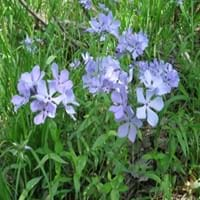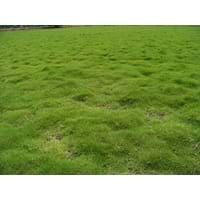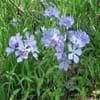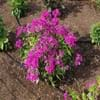Life Span
Perennial
Perennial
Type
Flowering Plants
Grass
Origin
Northeastern United States, Mid-Atlantic United States, Southeastern United States, Central United States, Texas, Canada
South-Eastern Asia, Asia
Types
Blue Moon, Clouds of Perfume
Korean Lawngrass , Meyer Zoysiagrass , Manilagrass
Habitat
Rich Woods
Lower slopes, Sandy stream banks
USDA Hardiness Zone
4-8
8-11
Sunset Zone
1a, 1b, 2a, 2b, 3a, 3b, 4, 5, 6, 7, 8, 9, 10, 11, 12, 13, 14, 15, 16, 17
H1, H2, 8, 9, 12, 13, 14, 15, 16, 17, 18, 19, 20, 21, 22, 23, 24
Habit
Mat-forming
Clump-Forming
Minimum Width
Not Available
Flower Color
Blue Violet
Green, Light Green
Flower Color Modifier
Bicolor
Bicolor
Fruit Color
Not Available
Non Fruiting Plant
Leaf Color in Spring
Green
Light Green, Dark Green
Leaf Color in Summer
Green
Light Green
Leaf Color in Fall
Green
Green, Yellow green, Gold
Leaf Color in Winter
Not Available
Gold, Tan
Leaf Shape
Ovate-lanceolate
Grass like
Plant Season
Spring
Spring, Summer, Fall, Winter
Sunlight
Partial Sun, Partial shade
Full Sun, Partial Sun
Growth Rate
Fast
Very Slow
Type of Soil
Loam
Loam, Sand
The pH of Soil
Neutral
Acidic, Neutral, Alkaline
Soil Drainage
Well drained
Average
Bloom Time
Spring
Not Available
Tolerances
Not Available
Drought, Salt, Soil Compaction
Where to Plant?
Container
Ground
How to Plant?
Cuttings, Seedlings
Sod, Sprigging or Stolonizing
Plant Maintenance
Medium
Medium
Watering Requirements
Requires regular watering
weekly regular
In Summer
Lots of watering
Lots of watering
In Spring
Moderate
Moderate
In Winter
Average Water
Average Water
Soil pH
Neutral
Acidic, Neutral, Alkaline
Soil Type
Loam
Loam, Sand
Soil Drainage Capacity
Well drained
Average
Sun Exposure
Partial Sun, Partial shade
Full Sun, Partial Sun
Pruning
Remove dead flowers
Remove damaged leaves, Remove dead branches, Remove dead leaves
Fertilizers
Apply 10-10-10 amount
All-Purpose Liquid Fertilizer
Pests and Diseases
Leaf spot, Powdery mildew, Rust
Army-worms, sod webworms
Plant Tolerance
Drought
Drought
Flowers
Showy
Insignificant
Flower Petal Number
Single
Single
Foliage Texture
Medium
Fine
Foliage Sheen
Matte
Matte
Attracts
Hummingbirds, Butterflies
Crickets
Allergy
Mild Allergen
Not Defined
Aesthetic Uses
Ground Cover
Beautification, Cottage Garden, Farmland, Ground Cover, Landscape Designing
Beauty Benefits
Not Available
Not Available
Environmental Uses
Air purification
Provides ground cover, soil erosion prevension on hill slopes
Medicinal Uses
Boils, Eczema, Intestinal disorders
Unknown
Part of Plant Used
Flowers, Leaves, Root
Whole plant
Other Uses
As a tea substitute, Used as eyewash
Used as a golf course turf
Used As Indoor Plant
No
Insignificant
Used As Outdoor Plant
Yes
Yes
Garden Design
Mixed Border, Rock Garden / Wall, Wildflower
Container, Edging, Groundcover, Lawns and Turf, Mixed Border, Rock Garden / Wall, Tropical
Botanical Name
PHLOX divaricata 'Blue Moon'
ZOYSIA tenuifolia
Common Name
Wild Blue Phlox, Woodland Phlox
Korean Velvet Grass
In Hindi
Wild Blue Phlox
कोरियाई मखमल घास
In German
Wild Blue Phlox
Korean Samt Gras
In French
Wild Blue Phlox
herbe de velours coréenne
In Spanish
Wild Blue Phlox
hierba de terciopelo de Corea
In Greek
Άγρια μπλε Phlox
hierba de terciopelo de Corea
In Portuguese
Wild Blue Phlox
grama de veludo coreano
In Polish
Dziki Niebieski Phlox
Not Available
In Latin
Phlox ferae blue
Carl herba
Phylum
Magnoliophyta
Angiosperms
Class
Magnoliopsida
Monocotyledonae
Order
Solanales
Cyperales
Family
Polemoniaceae
Poaceae
Clade
Angiosperms, Asterids, Eudicots
Commelinids
Tribe
Phlocideae
Cynodonteae
Subfamily
Polemonioideae
Chloridoideae
Importance of Wild Blue Phlox and Korean Velvet Grass
Want to have the most appropriate plant for your garden? You might want to know the importance of Wild Blue Phlox and Korean Velvet Grass. Basically, these two plants vary in many aspects. Compare Wild Blue Phlox and Korean Velvet Grass as they differ in many characteristics such as their life, care, benefits, facts, etc. Every gardener must at least have the slightest clue about the plants he wants to plant in his garden. Compare their benefits, which differ in many ways like facts and uses. The medicinal use of Wild Blue Phlox is Boils, Eczema and Intestinal disorders whereas of Korean Velvet Grass is Unknown. Wild Blue Phlox has beauty benefits as follows: Not Available while Korean Velvet Grass has beauty benefits as follows: Not Available.
Compare Facts of Wild Blue Phlox vs Korean Velvet Grass
How to choose the best garden plant for your garden depending upon its facts? Here garden plant comparison will help you to solve this query. Compare the facts of Wild Blue Phlox vs Korean Velvet Grass and know which one to choose. As garden plants have benefits and other uses, allergy is also a major drawback of plants for some people. Allergic reactions of Wild Blue Phlox are Mild Allergen whereas of Korean Velvet Grass have Not Defined respectively. Having a fruit bearing plant in your garden can be a plus point of your garden. Wild Blue Phlox has no showy fruits and Korean Velvet Grass has no showy fruits. Also Wild Blue Phlox is not flowering and Korean Velvet Grass is not flowering . You can compare Wild Blue Phlox and Korean Velvet Grass facts and facts of other plants too.





